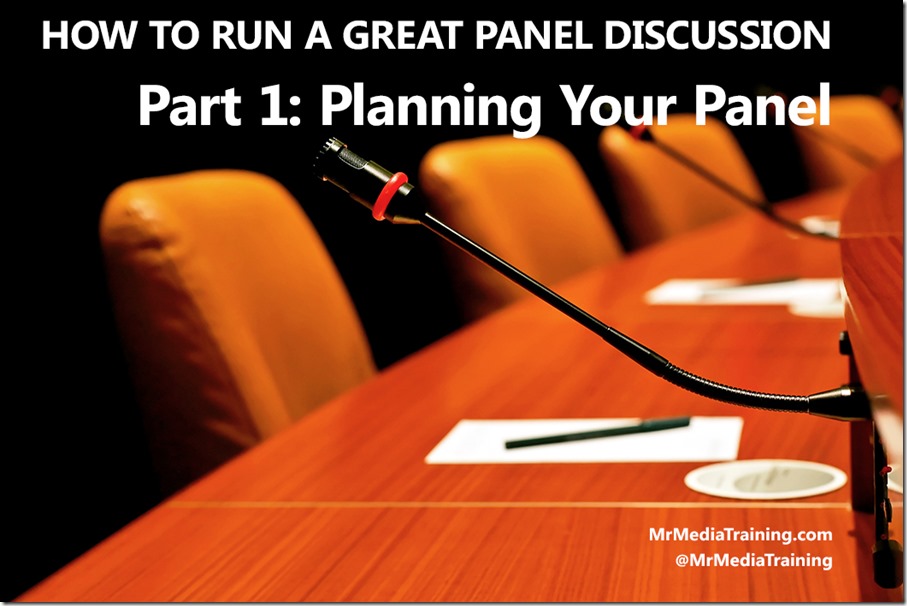How To Plan A Great Panel Discussion
This is the first post of a six-part series that will teach you how to plan and deliver outstanding panel presentations. Click here to see all six parts.
Like any other presentation, you should understand who will be in your audience and what value they can glean from your panel. That knowledge will help inform your panel’s title and session description, as well as which panelists you should invite to join you.
Rather than attempting to be a hybrid moderator-panelist, serve as (or assign) a designated moderator. As Scott Kirsner, a business columnist for The Boston Globe points out:
“Every panel needs a strong moderator, and the role of the moderator is very different from the role of a panelist.”
The question of how many panelists to invite is one of balance: too few, and the session may lack a range of experience and viewpoints; too many, and each panelist’s talk time may be too limited to have impact. For the typical hour-long panel, I’ve found three panelists to be a good number, although two or four can also work nicely.
A Great Panel Has Different Perspectives
Great panels are diverse. In this context, diversity can mean many things: age, gender, race, years of experience, viewpoint, personality, job responsibilities, and more. The key is to book panelists who bring different perspectives to the topic. Watching three people who all view the world similarly (and who, in terms of demographics, basically look the same) can quickly bore an audience.
Vet potential panelists by casting a wide net and conducting several “pre-interviews” before officially inviting anyone to join you. It may feel bad to speak to a potential panelist and then decide not to use them—but do it anyway. Just explain upfront that you’re in the exploratory phase and trying to ensure a diversity of views.
Once you’ve booked your panel, schedule a planning conference call, during which you’ll do three primary things:
- Share your goals for the panel: The panelists should understand who will be in the audience, have a chance to review the session title and description, and consider how they might deliver value to audience members.
- Discuss the session flow: Explain how you intend to open and close the session, how you plan to moderate the discussion, whether and how you plan to take audience questions, and whether panelists should engage directly with one another. To ensure a fast-moving panel, mention that shorter answers are generally better than long ones, and that you may jump in if answers go too far past the one-minute mark (when the physiological symptoms of stress begin to manifest themselves, what panelists think is one minute of speaking time is often closer to two or three).
- Learn what each panelist would like to discuss: Review the topics on which you plan to focus, offer panelists an opportunity to add their thoughts about those and other potential topics, and explore where panelists disagree with one another or have unique perspectives. Also, ask each panelist to send you a short (2-4 sentences) bio along with a headshot, which you’ll use for their introductions. At least one sentence of their bio should specifically address their connection to the panel’s topic.
See all six parts in this series, in which you’ll learn how to plan a panel, set up the room, ask riveting questions, engage with the audience in unexpected ways, and much more!




